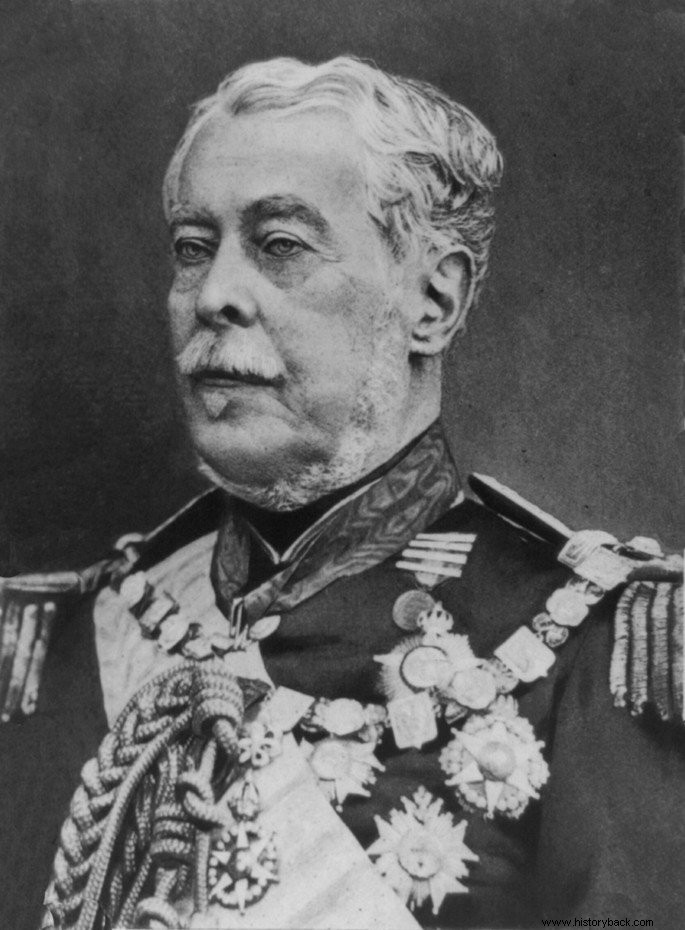Marshal Luís Alves de Lima e Silva, Duque de Caxias , was born on August 25, 1803, in Porto Estrela, Rio de Janeiro and died on May 7, 1880, in Valença (RJ).
Career military, he acted in practically all the conflicts that happened in Brazil in the 19th century. He participated in the wars of independence in Bahia, took part in fighting the revolts during the regency period in Rio Grande do Sul and Maranhão, and served in the Cisplatine War.
Finally, he commanded the Brazilian army in Paraguay. In addition, he was a Senator of the Empire, Minister of War, and President of the Council of Ministers.
In 1923, the commemoration of Soldier's Day was instituted, on August 25, the day of Caxias' birth. Later, he would be chosen as patron of the Brazilian Army in 1962.

Duque de Caxias Biography
Luís Alves de Lima e Silva was born into an illustrious military family, as his father, uncle and grandfather belonged to the army.
His father would also stand out as a politician integrating the first Provisional Trina Regency and would be a senator of the Empire.
Born in Porto Estrela, in the current district of Taquara, in Rio de Janeiro, Caxias at the age of five was already a cadet. This practice was common at the time, especially with officers' children.
He entered the Royal Academy of Artillery, Fortification and Design and graduated there as a lieutenant in 1820. Two years later, Dom Pedro proclaimed Brazil's independence from Portugal. With that, Portuguese troops stationed in Bahia surround the capital, Salvador.
To fight them, Dom Pedro I decides to create the "Battalion of the Emperor" that would be formed by officers chosen personally by him. Caxias joins this battalion and takes part in three attacks during the fighting.
Upon returning from Bahia, he receives the title he would be most proud of in his entire life:"Veteran of Independence".
Subsequently, he would participate in the Cisplatine War (1825-1828), where Brazil and Argentina disputed the territory that today corresponds to Uruguay.
When Dom Pedro I finds himself torn between occupying the Brazilian or Portuguese throne, Caxias swears loyalty to him. However, the Emperor abdicates in favor of his five-year-old son. Subsequently, he would command the Sacred Battalion, which would give rise to the National Guard.
During the regency period, Caxias participated in several wars such as Balaiada (1838-1841) and Farroupilha (1835-1845).
For his role in the Balaiada he was promoted to brigadier on 18 July 1841. He was then awarded the title of baron. He was the only Brazilian to be able to choose the name of the place he would like to bear and he chose "Caxias", the city of Maranhão where the last battle of the Balaiada took place.
Caxias and the Paraguayan War
In 1866, Caxias took command of the Allied troops fighting in the Paraguayan War (1864-1870).
In the Battle of Itororó, Brazilian troops needed to cross a bridge in order to advance over the terrain. In the midst of the confrontation, Caxias shouted to his men “follow me those who are Brazilians” to encourage them to fulfill their mission. The fact is that the allied army was able to advance and the Paraguayans left the position.
Caxias would be able to take the army to Asunción, capital of Paraguay, guaranteeing the Allied victory.
On account of his participation in the Paraguayan War, Luís Alves Lima e Silva would be awarded the title of Duke. He is the only Brazilian to have this degree of nobility during the Second Brazilian Reign.
We have more texts on the subject for you :
- National Guard
- Don Pedro I
- Cisplatin War
